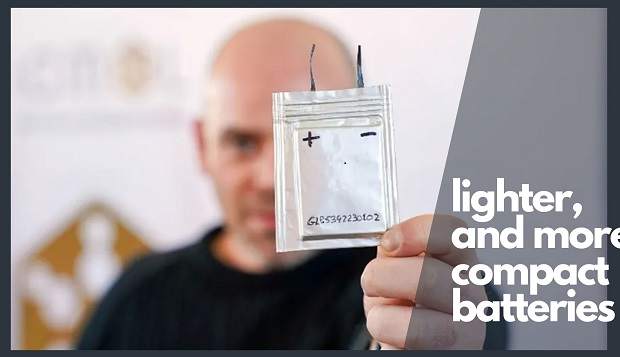Spanish researchers replace metals with graphene and create more powerful, safer, lighter, and more compact batteries
The Institute of Molecular Science (ICMol) of the University of Valencia and the Graphenano corporation have created a metal-free battery that they claim will revolutionize the safety and efficiency of batteries.
Science is turning to the research and development of new technologies that drive the transition toward more efficient and sustainable energy systems. And the latest discovery made by two Spanish entities is one more example of this.

We are specifically talking about the project carried out by Graphenano and the Institute of Molecular Sciences (ICMol) of the University of Valencia, which developed the first battery cell without current collectors or metal terminals.
The system, which uses graphene and carbon nanomaterials instead, leads to the production of safer, lighter, and more efficient batteries, says the Valencian institution.
“Its application in the field of electric vehicles, aviation or stationary storage, among others, revolutionizes the battery sector.”
How is the battery without metals
The Valencian university explains that the project has managed to eliminate the need to use sheets of copper, aluminum, or steel in conventional batteries to evacuate the electric current, as well as tabs (current terminals) made of nickel or other metals used to transfer energy from the inside to the outside of the battery.
Instead, graphene and other carbon nanomaterials have been used, which are materials with good electrical conductivity.
That has made it possible to significantly reduce the weight and volume of the devices, increasing the energy density between 30% and 60%.
In addition, the risk of an accident due to explosion or fire upon contact with air has been eliminated, as has been verified in tests.
According to Martin Martnez, CEO of Graphenano, “We have patented a technology that addresses the battery safety issue with an innovative approach.”
“Our system provides such chemical stability that the battery does not burn in contact with air, not even in the presence of water, which makes it possible to dispense with the heavy safety shields of current batteries”, explains the businessman.
Thus, with this method, it is feasible to create batteries that are safer, lighter, more powerful, smaller, and ultimately more environmentally friendly.
The decrease in weight and volume makes it possible to increase both the energy density (in watt-hours per kilogram) and the volumetric density (watt-hours per liter).
All this without the need to replace the current cell assembly machinery, which facilitates its implementation without excessive industrial cost.
More sustainable and versatile
The new cell is more sustainable and recyclable due to the removal of metals from the collectors, which reduces its carbon footprint and encourages the recycling of materials.
That is aligned with the strategy of the European Commission, Battery Passport, to control the complete life cycle of the battery, indicates the University of Valencia.
Added to this is the need for scarce metals on Earth, which has a positive impact on the economy and global geostrategy.
This system is versatile and can be used in different chemical products, such as lithium or sodium, and opens up new possibilities in silicon-based batteries, supercapacitors, fuel cells, and hydrogen electrolyzers.
What is graphene

Graphene is a two-dimensional nanometric material, consisting of a single layer of carbon atoms strongly cohesive by bonds that present sp2 hybridization and arranged in a uniform, slightly wavy surface, with a structure similar to that of a honeycomb due to its atomic configuration. hexagonal.
We are talking about one of the allotropic forms of carbon, as are graphite and diamond.
The thickness of graphene ranges from 1 to 10 carbon atoms. It is the strongest material known in nature, being stronger than structural steel with the same thickness and harder than diamond.
In addition, it is elastic and flexible, which allows it to withstand loads and stresses without breaking.
It also has high thermal and electrical conductivity, allowing it to dissipate heat and withstand strong electrical currents without heating up.
It is virtually transparent, water-repellent, and so dense that even helium gas cannot pass through it. It also has high electron mobility, making it ideal for applications in nanoelectronic devices.
Due to its extraordinary mechanical, electrical, chemical, magnetic, and optical capabilities, graphene is one of the most researched nanomaterials in existence right now.
Being pure carbon, it is also abundant in nature and ecologically sound. It is expected to have a great impact in a wide variety of applications in different sectors, such as electronics, energy, medicine, aeronautics, and automotive.
Graphene was discovered by doctors Konstantin Novoselov and Andre Geim in 2004, both winners of the Nobel Prize in Physics in 2010 for their research on this material.
Its discovery opened the doors to a large amount of research and development in the field of 2D materials and expected that it will continue to be a topic of great interest in scientific and technological research in the future.
Related Post
